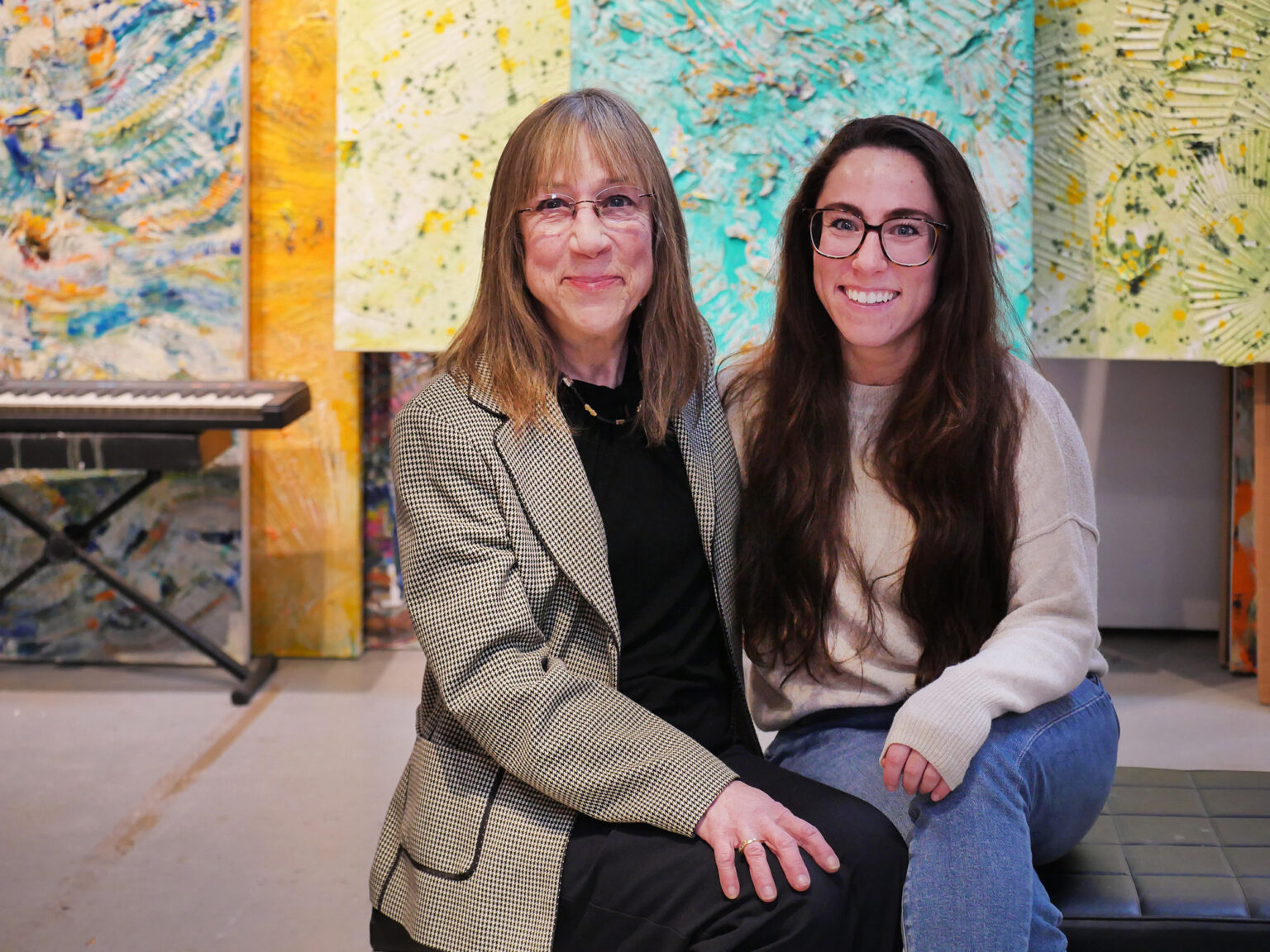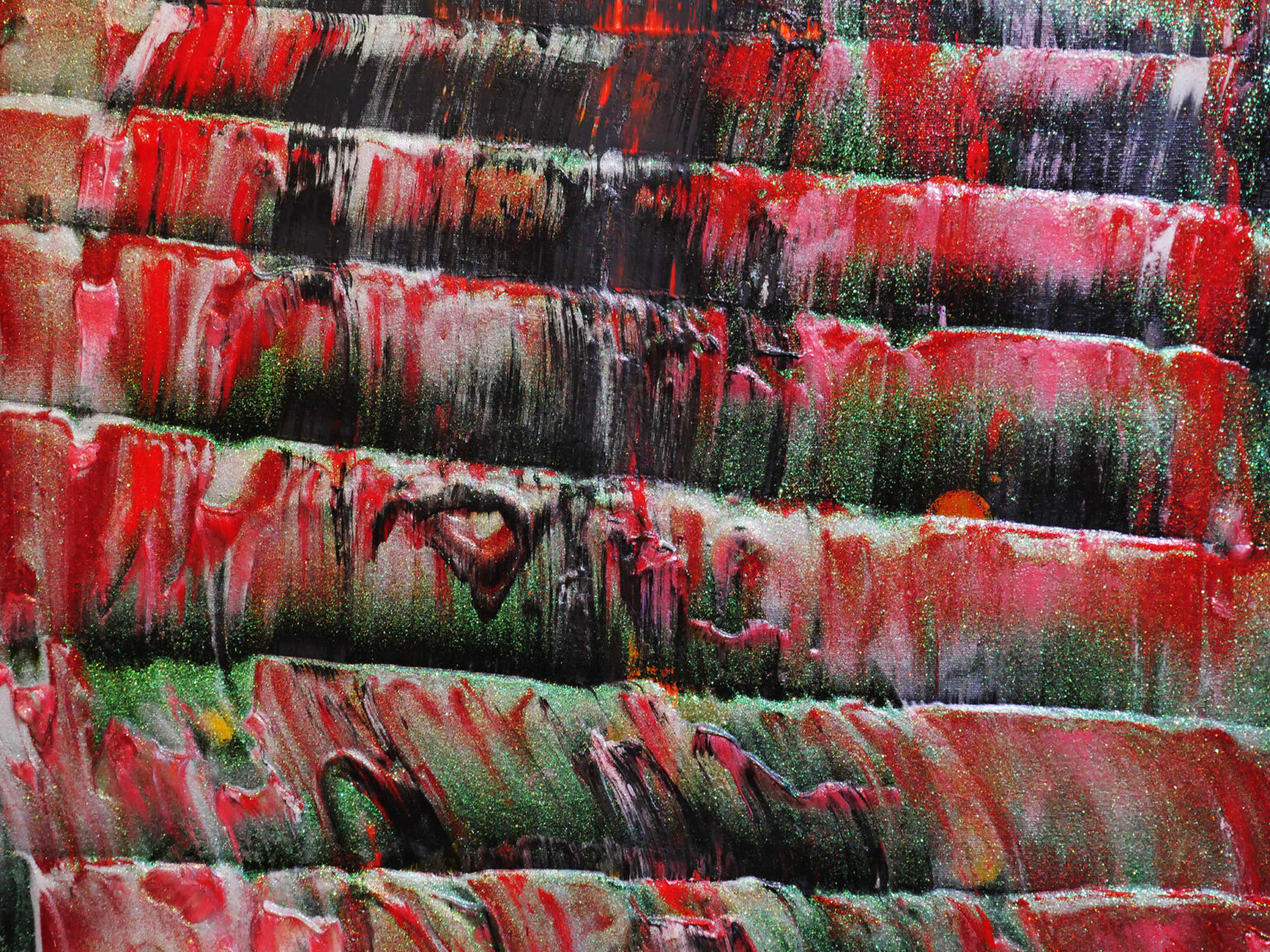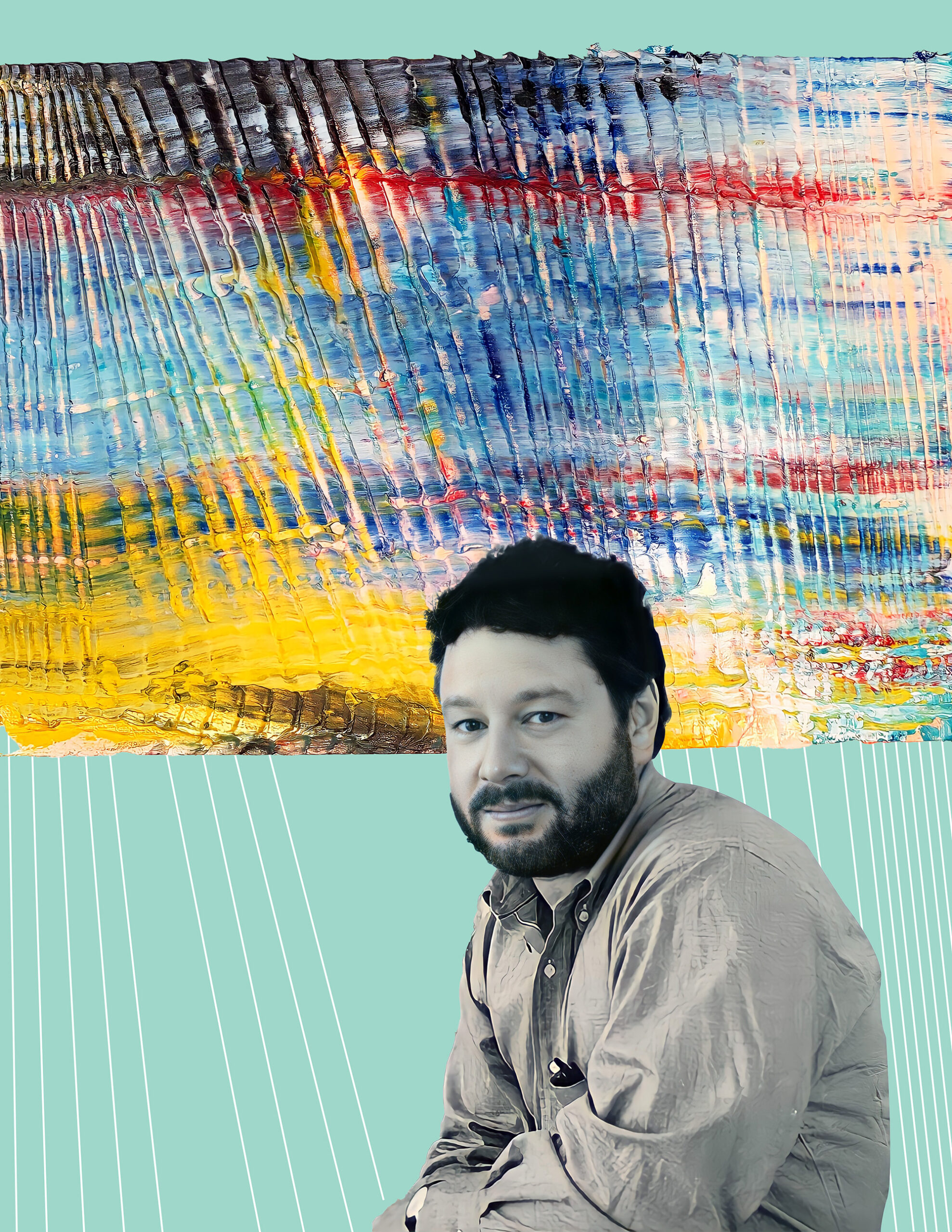The Vista-based artist passed away last May at the age of 68
Writing by Rob Cavenagh
Photography by Justin Negard
Some children have fond memories of watching their parents in the kitchen or going to their workplace on days off of school. Yvonne Lerner, however, remembers doing her homework in her father’s studio, located approximately a quarter mile from their home. A painter since the mid-1970s, Roy Lerner built a studio towards the back of his property in the early 1980s, when he and his paintings outgrew the basement of his Vista home.
“I would come in when he was painting,” she remembers. “He kind of let me do my own thing, but you knew to be quiet when he was working. I also loved walking back and forth from the studio to our house together. He was like a stay-at-home dad, because this was his job.”
Becoming a painter
Roy Lerner attended Franconia College with dreams of becoming a photographer, but his professor, painter/sculptor/critic Peter Bradley, suggested he consider painting instead.
“One day, Bradley said to him, ‘Why don’t you just paint instead of altering your negatives?’” says his wife, Patty, who met Roy at Franconia. “It took a while for him to pursue art because he wasn’t surrounded by it when he was younger. His dad was an engineer.”
Bradley played a significant role in guiding Roy’s professional artistic momentum, introducing him to noteworthy critics and artists in New York, including Clement Greenberg, Kenworth Moffett and even musician Miles Davis.
After receiving his BFA and moving to France to work as sculptor Anthony Caro’s assistant, Lerner became a serious painter. His early paintings, in the mid-1970s, had a somewhat organic sensibility and looked, at times, according to his wife Patty, “like a topographic map or aerial photograph.”
As his style developed and the scale of his works grew, Roy began experimenting with texture; he mixed materials to thicken the paint and allow for shaping. This resulted in paintings with three-dimensional bottom layers and color primarily on top.
“My art is all about modulation, variations in color, shape and texture that catch our eye and ignite our interest,” he explained in a video for OnlineTV in 2001. “I stroke the canvas with a palette knife, depositing repeating lines of thick, wet gel whose every facet catches the light. This is the cornerstone of my painting structure. Each stroke contains evidence of touch and telltale signs of emotion.”
It was this experimentation that led to a fruitful relationship with Golden Artist Colors, a paint company whose acrylic paints and their famous finishes allowed Roy’s paintings to “change with the time of day; when you see them in sunlight, they look different,” according to Patty.
“Roy knew every aspect of the Sam Golden/Bocour family,” says Jack Coyne, a representative at Contemporary Art Partners, who met Roy in 2020. “He was very involved with Golden Paint.”
Roy referred to his paintings as “hypertexture,” and his technique as “stutter stroke,” referencing the way he crushed anodized aluminum and mica to create thickeners and reflective material.

His inner circle
Roy surrounded himself with a group of artists, critics, collectors and curators who were notable and diverse. His early exposure to other painters in what became known as “The New New School” led to dozens of shows in many parts of the United States, Canada and Europe—most notably, “Ten Years of Great Paintings” at the Exedra Hotel in Rome in 2007.
Yvonne says has fond memories of that trip to Rome. She was a little girl at the time, and she enjoyed the various locations and museums they visited, thanks to his paintings and exhibitions.
“It was the most wild hotel I’ve ever seen,” she remembers. “But my first plane ride was to France for an art show when I was a newborn.”
His friends included sculptor Anthony Caro, critic Clement Greenberg, artists Kenworth Moffett and Kenneth Noland, and collector Lewis Cabot.
In an effort to grow his audience in the 1980s, Roy began working part-time at galleries and museums, handling and installing paintings and sculptures as exhibits changed.
“Few things are as instructive for better understanding or appreciating an art object than actually handling it,” notes Chris White, former director of the Aldrich Contemporary Art Museum and Roy’s close friend.
In addition to his many solo shows, Roy also participated in a number of group shows, including the Triangle Artist Workshop, and was a founding member of the Stamford Art Loft Collective.

The soundtrack of his life
Music was Roy’s other major passion. He often painted while listening to jazz at full volume on the huge speakers in his studio, and there were several electric guitars and amplifiers nearby, ready for use when the mood struck.
He regularly painted to the tunes of Art Blakey and the Jazz Messengers or Miles Davis, among others. Davis, in particular, looms large in the Lerner legend. Introduced by Bradley, his former professor, Roy and Davis had a friendly relationship that centered around a mutual admiration of their different artistic mediums, along with an appreciation for their similar level of devotion and work ethic.
“Roy was, to use a musical analogy, much more a jazz improviser than a film score composer,” White remembers.
Roy was also known for suddenly putting down his brush and picking up a guitar; he would play for himself or entertain whomever was visiting that day. He took lessons with noted American guitarist and celebrated Ridgefield resident Arlen Roth, which eventually led to acquisition of a Fender Telecaster—the instrument most associated with Roth and his long and storied musical career.
Roy’s passion for life and art was apparent to all who knew him. Now, his wife and daughter are working to cement his legacy. He was a man who walked in many famous circles; he was a connector of people, art, creativity and wonder.
“But if you are following the trajectory of other people that my dad worked with and the people that he was so close to, he was always like one name away from fame,“ says Yvone.
“I always told him,” Patty remembers, “‘I hope you live long enough to see your success.’”
This article was published in the March/April 2024 print edition of Connect to Northern Westchester.
Roy’s paintings are on permanent display at:
Edmonton, Alberta, Canada
Boston Museum of Fine Art, MFA/Hines Contemporary Collection, Cambridge, MA
Flint Institute of Art, Flint, MI
Prague, Czech Republic
Nova Southeastern University’s Museum of Art,
Fort Lauderdale, FL
Portland Museum of Fine Art Portland, ME
Vero Beach, FL
University of Toronto Art Centre, Ontario, Canada

Rob Cavenagh
Rob Cavenagh grew up in a house full of cameras and photographs as the son of a photography professor. His first camera was a twin-lens reflex called a Start B that used 110 roll film. Lately more of a digital photographer, Rob is a creative agency producer who also writes about music and soundtracks, is a longtime vinyl DJ/record collector and plays guitar in the local band Ask Your Mom. Bedford residents since 2000, Rob and his wife Rebecca are empty-nesters who live with their dog Fergus.










